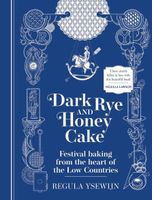Advertisement
Flour and honey
Published 2023
The early dough was simply made of flour and honey, creating a sturdy paste that could easily be moulded and that would retain its shape and carving sharply while being baked. These cakes were rock-hard and far from a pleasurable eating experience, but they were sweet and pretty. I believe they were treated as confectionery: people broke pieces off the cakes to suck on like on hardboiled sweets. Today in Wallonia in Belgium, this ancient form of honey cake remains alive in the couque de Dinant. Intricately carved moulds are used to print the dough, depicting the town, mythical creatures, images of daily life (albeit from a few centuries ago), fruit, flowers and animals. The honey cakes depicting the town, its name also carved into the fruit wood, tells us these honey cakes were not sold to eat and be done with it. They will never have been cheap. This was a cake to treasure, to keep as a souvenir of the occasion. Bakeries in Dinant today have clear signs saying not to bite into their honey cakes because you will break your teeth. Instead, they tell you to soak the hard biscuit in tea, coffee or milk to soften it.

